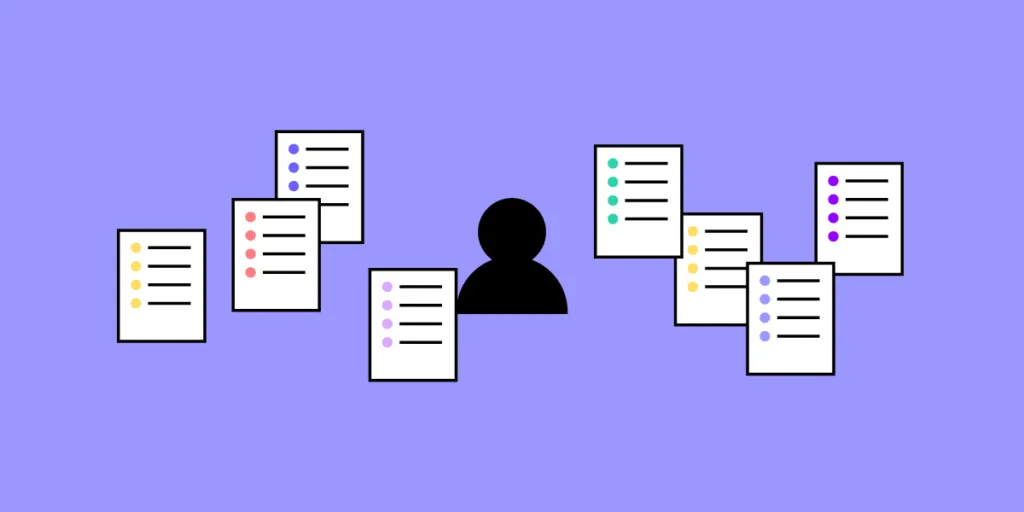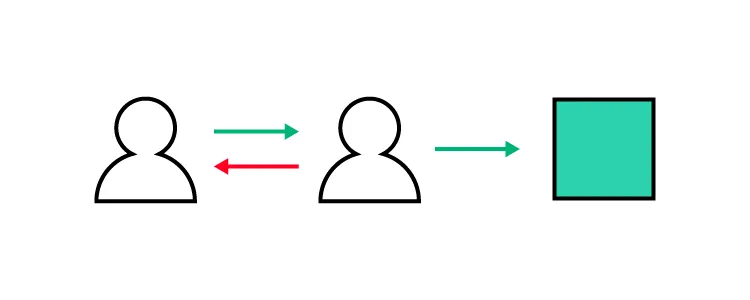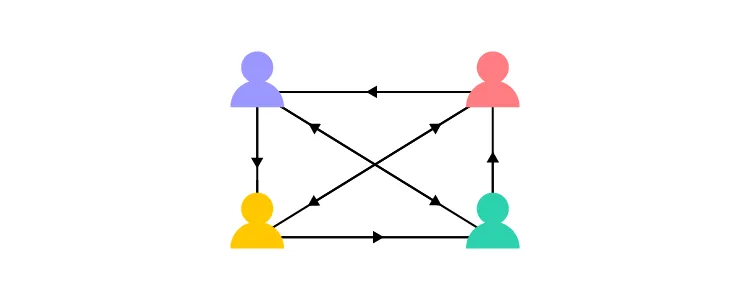What is Data-Driven Design and How to Use it?

Data-driven design is a method of making design decisions based on data collected by designers. It has a great potential of perfecting design in a way of fulfilling user needs and keeping them happy. Let’s learn all about it.
Discover how UXPin can enhance your data-driven design process with the world’s most advanced UX design tool. Unlock the full potential of your design decisions. Sign up for a free UXPin trial.
What is Data-Driven Design?
Data-driven design uses quantitative and qualitative data to inform and shape design decisions in digital product development. Designers use actual user behavior and preferences from user research to drive decision-making, creating more effective and user-centric solutions.
This data-driven approach minimizes assumptions and guesswork, resulting in more targeted and relevant product design decisions. By incorporating data into the design process, designers can better understand user needs and enhance user satisfaction, allowing them to balance user and business goals successfully.
What does it mean to be data-driven?
Being data-driven means making decisions and taking actions based on empirical evidence and insights derived from data analysis, rather than relying solely on intuition, assumptions, or personal opinions.
In a data-driven approach, data serves as the foundation for understanding trends, identifying patterns, and informing strategies across various domains or product development phases.
In the context of UX design, being data-driven means utilizing empirical data and insights to inform the design process and improve the user experience of products.
What’s a difference between UX design and data analytics?
UX design and Data Analytics are two distinct fields. UX design primarily focuses on creating intuitive and user-friendly experiences for digital products or services. It involves understanding user behavior, conducting user research, and designing interfaces that meet user needs.
Data analytics, on the other hand, focuses on analyzing data to derive insights and make informed decisions. It involves collecting, processing, and interpreting data to uncover patterns, trends, and correlations that can be used for strategic planning, optimization, and problem-solving.
They are both crucial for creating successful products. Integrating insights from data analytics into UX design processes can lead to more informed design decisions, while prioritizing user experience can ensure that data-driven insights are effectively communicated and implemented to meet user needs.
Types of Data for Design
There are two types of data UX designers and stakeholders rely on for decisions:
- Quantitative data–what, when, and how it happens
- Qualitative data–why it happens
Quantitative data
Quantitative data is numerical and measurable, giving designers objective insights into user behavior and interactions. This quantifiable data type is valuable for identifying trends and patterns, allowing designers to make informed decisions based on hard evidence.
For example, a designer might analyze website analytics to determine which pages receive the most traffic or where users tend to drop off, guiding layout and content improvement decisions.
Qualitative data
Qualitative data is non-numerical and focuses on subjective user opinions, feelings, and motivations. This qualitative data helps designers understand the “why” behind user behavior, offering a deeper insight into user needs and preferences.
For instance, conducting user interviews or analyzing feedback from usability testing can reveal user pain points or preferences that inform the design process, leading to more user-centric solutions.
Important Data Sources for Designers
Here are six domains where design teams typically source data:
- Analytics tools
- User surveys & interviews
- A/B testing
- Usability testing
- Heatmaps & click tracking
- Multivariate testing

Analytics tools
Analytics tools (Google Analytics, product metrics, social media analytics, email analytics, etc.) provide designers with valuable quantitative data on user behavior, demographics, and engagement.
These tools offer quantifiable insights into how users interact with a digital product, helping designers identify areas of improvement and optimize the user experience.
For example, a design team might analyze the bounce rate of a specific page to identify issues and make adjustments to retain users and encourage further interaction.
User surveys & interviews
User surveys and interviews are essential for collecting qualitative data, offering insights into user opinions, preferences, and motivations. Designers engage with users directly to better understand their needs and pain points, leading to more informed design decisions.
For example, a design team may conduct user interviews to uncover the reasons behind low adoption rates for a specific feature, guiding necessary improvements or adjustments.
A/B testing
A/B testing (split testing) is a valuable method for comparing two or more design variants to determine which performs better with users. Designers use A/B testing to make informed decisions about the most effective and intuitive design layouts or elements.
For example, a design team might test two different call-to-action button styles to determine which one leads to higher conversion rates, ultimately choosing the version with the best performance.
Usability testing
Usability testing is a crucial step in the design process, allowing designers to observe users as they interact with a product and identify any usability issues.
For instance, a design team might conduct a usability test on a new checkout process and discover that users struggle to find the “Continue” button, prompting a redesign to improve visibility and user flow.
Heatmaps & click tracking
Heatmaps and click-tracking tools, such as Hotjar or Crazy Egg, visually represent user interactions on a website or app, offering insights into user behavior and preferences. Designers can use this data to identify popular elements or areas where users may struggle, leading to more informed design decisions.
For example, a design team might analyze a heatmap of their homepage and notice that users frequently click on an unlinked image, prompting the team to add a link to improve the user experience.
Multivariate testing
Multivariate testing is an advanced technique that allows designers to test multiple variables simultaneously within a single test, providing a more comprehensive understanding of how different design elements interact and impact user behavior.
Multivariate testing is beneficial when optimizing complex layouts or features, as it helps identify the most effective combination of design elements.
For example, a design team might conduct a multivariate test on a landing page, simultaneously comparing different headlines, images, and call-to-action button colors.
Challenges and Limitations of Data-Driven Design

Data collection and privacy concerns
Data collection and privacy concerns are significant challenges for UX designers. They must balance gathering valuable user data, respecting user privacy, and complying with data protection regulations, such as GDPR and CCPA.
Design teams can address these concerns by adopting privacy-by-design principles, collecting only necessary data, and obtaining explicit user consent. Additionally, designers should anonymize data whenever possible and use secure data storage and transmission methods to maintain user trust and adhere to legal requirements.
Potential data biases
Data biases can arise from various sources, such as sampling errors or the influence of pre-existing beliefs. These biases may lead to incorrect conclusions and negatively impact design decisions.
To mitigate potential biases, design teams should:
- Strive for diverse and representative samples
- Cross-validate data with multiple sources
- Continuously question their assumptions
To mitigate potential biases, design teams should strive for diverse and representative samples, cross-validate data with multiple sources, and continuously question their assumptions.
It’s also beneficial to involve a multidisciplinary team in data analysis, as different perspectives can help identify potential biases and improve decision-making.
Misinterpreting data and making incorrect assumptions
Misinterpreting data, poor data, or incorrect assumptions can lead to flawed design decisions and a suboptimal user experience. To prevent this, design teams should approach data analysis with a clear understanding of the context and limitations of the data.
They should verify their findings by triangulating data from various sources and employing rigorous statistical methods when analyzing quantitative data.
It’s vital to involve domain experts and users in the design process. Their input can help validate assumptions and interpretations, ensuring design decisions are expert-vetted and user-centric.
Implementing Data-Driven Decisions in the Design Process

Step 1 – Setting goals and objectives
Designers must establish clear goals and objectives before collecting and analyzing data. This goal-setting process involves identifying the key performance indicators (KPIs) aligning with user needs and business objectives. Setting specific, measurable goals enables designers to ensure their efforts and focus on the most impactful areas of the product or user experience.
Step 2 – Collecting and analyzing data
Once goals and objectives are in place, design teams must collect relevant quantitative and qualitative data from various sources, such as analytics tools, user surveys, and usability testing. Designers must employ rigorous methods to analyze this data, ensuring their conclusions are accurate and free from potential biases.
Step 3 – Identifying patterns and insights
Designers look for patterns and insights in collected data to inform their design decisions. This analysis may involve identifying user pain points, preferences, or behavior trends. By recognizing these patterns, designers can better understand user needs and make informed decisions throughout the design process.
Step 4 – Making data-informed design decisions
With valuable insights, designers can make data-driven decisions to address user needs and meet business objectives. This process involves iterating on the design, incorporating user feedback, and refining the product based on data. Designers often have to adjust or change direction as new data emerge, ensuring solutions remain relevant and practical.
Design teams build prototypes to test ideas and assumptions throughout the design process–from paper prototyping in the early stages to fully functional interactive prototypes later.
Step 5 – Using data to iterate and refine
Throughout the design process, it’s essential to measure the impact of design changes and iterate accordingly continually. Design teams monitor KPIs and gather ongoing user and stakeholder feedback, refining the design to optimize the user experience and achieve the desired results.
By embracing a data-driven approach, designers can ensure their work remains user-centric and aligned with user needs and business goals.
Balancing Data-Driven Design with Creativity and Intuition

While data-driven design is essential for creating user-centric solutions, designers must also remember the importance of creativity and intuition in the design process. Relying on data alone results in stale design decisions that lack originality and innovation.
The importance of intuition and creativity in design
Intuition and creativity play a crucial role in innovative design, allowing designers to think outside the box and generate novel solutions to user problems. These qualities enable designers to empathize with users, anticipate their needs, and craft engaging, memorable experiences that set products apart from competitors.
For example, designers might draw on their intuition and creativity to develop a unique, visually appealing layout that captures users’ attention, increasing engagement and better user satisfaction.
Striking the right balance between data and intuition
Balancing data-driven design with intuition and creativity is essential for producing truly effective, user-centric solutions. Designers should use data to inform and validate their decisions while trusting their instincts and expertise to guide the design process.
For example, a designer might notice a pattern in the data that suggests a specific feature is underutilized. While the data provides valuable insight, the designer’s intuition and creativity can help them identify and implement a more engaging design solution that resonates with users.
Avoiding over-reliance on data
While data is a powerful tool, over-reliance on data can stifle creativity and limit innovation. Designers should be mindful of this risk and ensure they don’t become overly constrained by data, which can lead to generic or unimaginative solutions.
For example, a design team might discover that a specific design pattern is popular among users. While it’s essential to consider this data, designers should also explore alternative solutions, as blindly following trends may result in a product that lacks distinction and fails to meet users’ unique needs.
Data-Driven UX Design With UXPin
Making data-driven design decisions relies on good data. Image-based design tools lack the fidelity and functionality to get accurate feedback during user testing, limiting the decision design teams can make.
UXPin is powered by code, enabling designers to build prototypes that look and feel like the final product. These interactive prototypes give designers actionable feedback to iterate and refine ideas while solving more problems and identifying better opportunities during the design process.
Want to see how interactive prototyping can enhance your decision-making ability? Build your first UXPin prototype. Sign up for a free trial.




